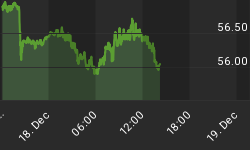The following is part of Pivotal Events that was published for our subscribers July 16, 2015.
Signs of The Times
"I believe the Communist Party still has the final say over the stock market."
- Financial Times, July 5.
"With his stock market riches, Gong Yifung bought a riverfront apartment for his son and daughter-in-law. He can dine well and travels abroad." (Gong is a retired shipyard worker.)
- The New York Times, July 6.
"Despite Rout on Its Stock Market, China's Economy Remains Strong"
- Financial Post, July 9.
It is uncertain how to classify the following story. Somewhere between Keynes and feel-good liberalism or maybe religious incantation?
"On Sunday, the new graduates of Tsinghua University are set...to celebrate degrees from one of China's most prestigious institutions, a place that fostered generations of political leaders. Just after the ceremony graduates [were instructed]...to loudly shout the slogan 'Revive the A shares, benefit the people; revive the A shares, benefit the people!'."
- Financial Times, July 10.
Obviously, much less hazardous to life than being condemned during the Cultural Revolution as a "capitalist-roader". That it was reported by the Financial Times suggests credibility.
Stock Markets
As Robert Louis Stevenson observed, "Sooner or later everyone sits down to a banquet of consequences". The plunge in Shanghai can be described as the first course, or as the Brits say "the first remove". And what a remove it has been!
In order to complete the full bull move to concluding mania, the SSEC needed to register three clusters of Upside Exhaustions. That was using 2007 as a guide.
These occurred on the explosive launch in December, then in April and then in late May. The last one was one such signal, not a cluster but it was enough to fit the ending pattern.
The nature of the zoom suggests upside requirements were well met. The 30 percent plunge strongly suggests that the China Bubble is over. As noted last week, the initial crack in the Nikkei in early 1990 was also accompanied by officials making bullish comments about lowering margin requirements.
Also noted last week was that the huge effort by China's policymakers is a magnificent failure of intrusive central banking. One side of it was in boosting until it became compulsive speculation and the other is in suddenly trying to thwart the fallout.
Just as the UK government did with the South Sea Bubble. Of course on that one everyone of importance was bribed and when too many new issues were diverting funds from going into the quasi-government company the House of Commons passed the Bubble Act. This was to prevent new stock issues from being floated. China suspended some 1200 listed stocks.
The 1720 Crash as with others since was a "world-changer".
On the initial break, the ChartWorks had the 200-Day exponential moving average as a target to pop the rebound. At a somewhat lower level, the 200-Day simple moving average ended the plunge.
The rebound target is between 4180 and 4450, perhaps accomplished in late July.
This near-term technical work fits with the historical pattern of peaking in May-June, churning around in the summer and expiring in the fall. This "model" was for current blow-offs in exchanges outside of the financial capital. Since the US market became big enough to be noticed it set final highs in a bubble-year in September. That's in 1929 and in 1873.
This has been the "model" for NY to make the final rally into September. This is enhanced by the tendency of the Biotechs to enjoy seasonal rallies from last week into September. The IBB is making new highs this week.
Other positives have been from our "Friends of the bull market". Margin debt, A/Ds and the Shanghai peak have been suggesting a NYSE peak some months from June.
The Shanghai slump pulled a number of exchanges and commodities down and relief is underway. It could run through August.
Link to July 17 Bob Hoye interview on TalkDigitalNetwork.com: http://talkdigitalnetwork.com/2015/07/bounces-on-shanghai-market-spectacular-to-watch/
Listen to the Bob Hoye Podcast every Friday afternoon at TalkDigitalNetwork.com















